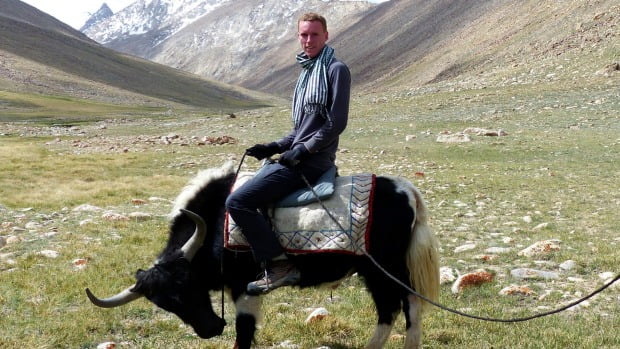
A stint living with yak herders on the Tibetan plateau inspired young entrepreneur Stefan Warnaar to develop a line of outdoor gear made from yak wool.
The chemical engineering student was struck by the softness of the yaks’ undercoat.
Knowing it helped the animals survive winter temperatures as low as -40 C, he thought it would be warmer and lighter than merino if he could find a way of using the fibre for base clothing layers.

Stefan Warnaar made the sort of clothing he wanted to wear for his own outdoor pursuits and his clothing company is believed to be one of the first in the world to use yak fibre.
Summer starter scholarships from the Canterbury University Centre for Entrepreneurship helped him prove it was possible, and research potential markets.
READ MORE
* Yak meat in Mongolian woman’s luggage seized at Auckland Airport
* Tibetan yaks arrive at Orana Park
His Peak to Plateau label is believed to be one of the first in the world to use yak fibre in outdoor clothing.

A lot of experimentation went into developing the correct blend of yak hair for Stefan Warnaar’s outdoor garments.
After a year perfecting the fabric and establishing suppliers, a recent Kickstarter funding campaign raised almost $80,000 to pay for his first full manufacturing run of garments.
As well as setting out to make the sort of outdoor gear he like to wear himself, he was also motivated by the desire to help the nomads who had been so hospitable.
“Tibetan herders are facing a tough choice — stay and keep their way of life, or leave everything behind for the city.
“Yak fibre is an opportunity that will keep them connected to their culture and way of life, but also provide a source of income.”
Warnaar said the herders he lived with during his travels rode and milked their yaks, used their dung for fuel and felted the fibre to make tents.
But they lacked the money and technology to process it – separating the soft fine under coat from the coarse outer hair – to make clothing.
Yaks shed their heavy winter coats in spring when the fibre is collected by combing the animals with a small rake, but Warnaar said only about a quarter of the fleece collected was useable.
After experimentation he discovered a yak and Tencel mix worked best.
“The early stuff was too hairy and it shrunk too much. I wanted it to be machine washable.
“We tried a few samples of yak, then a few of fifty-fifty yak merino, and then ended up with a yak Tencel blend.”
Warnaar said the resulting garments were warmer than merino, softer than silk and more absorbent that cotton.
He sources his fibre from a cooperative that buys direct from the herders and he has the fabric and clothing made in China.
Peak to Plateau’s three base layer garments will initially sell online, but Warnaar said his ultimate goal was to get them into retailers specialising in high performance outdoor clothing.
[sOURCE:-stuff]








